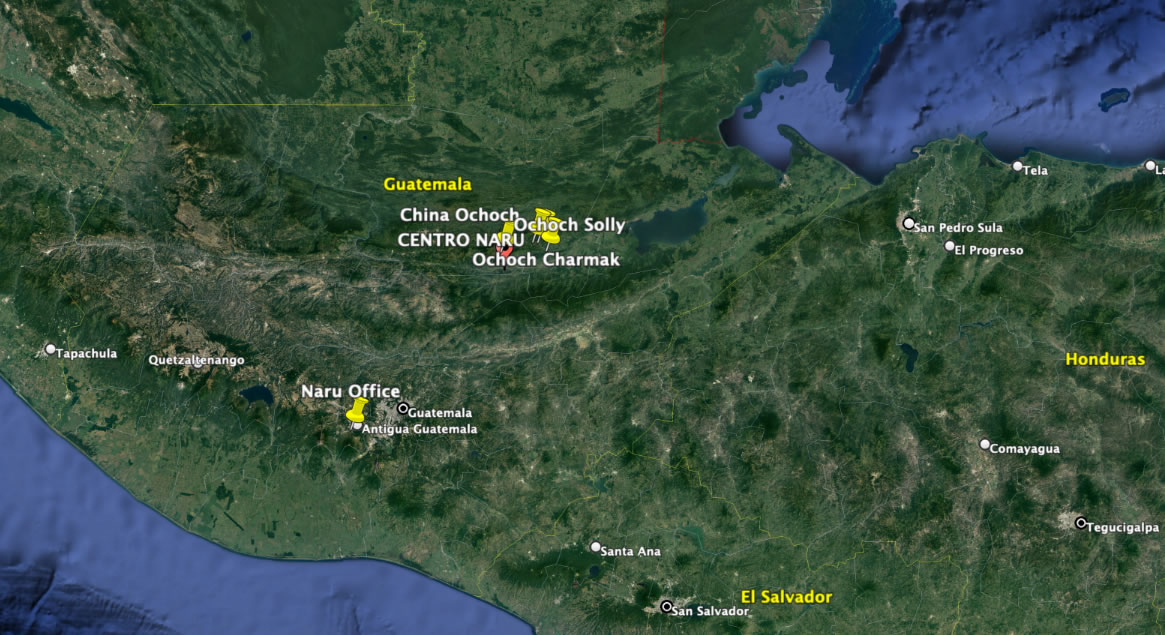Why the need?
Rural marginalisation
The Q’eqchi’ Maya have lived in these mountains for centuries if not millennia. Remnants of their ancestors’ lives still feature in the landscape, and an ancient culture endures. For many, rural living conditions have barely changed and extreme poverty prevails.
Typically our beneficiaries are subsistence corn farmers who migrate seasonally to work in coffee plantations since the area’s own production was all but lost. Or they travel to harvest cardamom, sugar, and more lately palm oil.
Narú focuses on the most vulnerable of these families: those that have one or more children with severe malnutrition; pregnant women at risk; babies of mothers who have died in childbirth; children with a terminally-ill parent; and those with medical needs that cannot be met locally.
Nearly all speak no Spanish and cannot read nor write. This, together with the inaccessibility of their communities, leaves them ever more marginalised and unable to exercise their legal, health and constitutional rights.
INTERNATIONAL
Guatemala has the fourth highest rate of chronic malnutrition in the world and the highest in Latin America, with indigenous and rural populations disproportionately affected… (World Bank 2022)
NATIONAL
Alta Verapaz (population 1.4m) ranked first in child mortality due to acute malnutrition. (MSPAS Gobierno de Guatemala, Jan-July 2022)
The department has the highest number of pregnancies in girls aged 10-14 years. (OSAR Jan–Jul 2022).
Guatemala map with Narú sites

